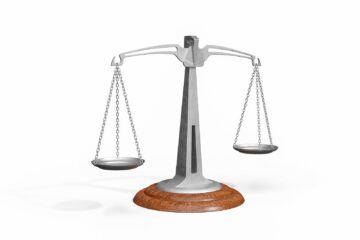![]()
Introduction:
In India, federalism refers to the relations shared between centre and states in the country. Federalism is regarded as the system of the country where the power of the authorities is divided between the central authority and among the other constituents within a country. Commonly federation can be said to be divided into two parts, where one is the centre that is responsible for the whole country and other is its constituents at various state levels responsible for the day-to-day functioning and administration of the states. However, both the state and the centre enjoy independent powers and cannot interfere in each other’s functioning.
In India Federalism is considered as a historical advancement. The term “federal” is said to be derived from Latin foedus, means “covenant”. The segregation of powers among the different units of government is known as Federalism. According to K.C., the federal principle is “the method of dividing powers so that the general and regional governments are each within a sphere coordinate and independent”[1]. A similar sort of definition has also been coined by A.V Dicey, where he has stated that “federalism includes distribution of powers among the units of government, along with the supremacy of the constitution and the authority of the courts as the interpreters of the constitution”[2].
Constitutional character of Indian Federalism
According to Article-1 of the Indian constitution, it is a unique, framework portraying its extreme detail and substance. It is the uniqueness of the Indian Constitution that is federal, India is declared to be a union of states. Part-XI of the Indian Constitution lays down the separation of powers between legislative, administrative and executive as well as between the union government and the various states of India[3].
Indian Constitution runs with a dual polity feature, wherein the jurisdiction of making laws separated and distributed among the union and state governments[4]. The powers in the country have been segregated amongst the three pillars of democracy i.e legislative, executive and judiciary. However, the judiciary is considered of supreme nature. The nature of the distribution of powers within the government is called the separation of powers. The main reason behind the separation of powers is well functioning of the government.
In the case of State of West Bengal v Union of India[5], “the Supreme Court of India has held, “the Constitution of India is not truly Federal in character. The basis of the distribution of powers between the Union and States is that only those powers which are concerned with the regulation of local problems are vested in the States and the residue, especially those which tend to maintain the economic industrial and commercial unity of the country are left to the Union”[6]. In State of Rajasthan v Union of India[7], the court has held that Indian union is federal. “The extent of federalism in it is largely watered-down by the needs of progress and development of the country which has to be nationally integrated, politically and economically coordinated and socially, intellectually and spiritually uplifted. With such a system, the states cannot stand in the way of legitimate and comprehensively planned development of the country in the manner directed by the Central Government”[8].
The features of Federalism includes
In a federal country, there are two or more levels of government, similarly, in India, there is the judiciary, executive and legislative which function independently. Each government has its jurisdiction of powers and shall not interfere in the functioning of other governments. The powers and functions of these government is administered by the Constitution of India. Supreme Court resides the highest authority in deciding the state disputes.
Legislative powers are mainly categorized into three parts:
Union List
“Union List consists of 100 items on which the parliament has exclusive power to legislate including defence, armed forces, arms and ammunition, atomic energy, foreign affairs, war and peace, citizenship, extradition, railways, shipping and navigation, airways, posts and telegraphs, telephones, wireless and broadcasting, currency, foreign trade, inter-state trade and commerce, banking, insurance, control of industries, regulation and development of mines, mineral and oil resources, elections, audit of Government accounts, constitution and organisation of the Supreme Court, High courts and union public service commission, income tax, custom duties and export duties, duties of excise, corporation tax, taxes on the capital value of assets, estate duty and terminal taxes”[9].
State List
State list consists mainly 61 items which include: “maintaining law and order, police forces, healthcare, transport, land policies, electricity in the state, village administration, etc. The state legislature has exclusive power to make laws on these subjects. In certain circumstances, the parliament can make laws on subjects mentioned in the State List, but to do so the Rajya Sabha (Council of States) must pass a resolution with a two-thirds majority that it is expedient to legislate in the national interest”[10].
Concurrent List
This list includes: “marriage and divorce, transfer of property other than agricultural land, education, contracts, bankruptcy and insolvency, trustees and trusts, civil procedure, contempt of court, adulteration of foodstuffs, drugs and poisons, economic and social planning, trade unions, labour welfare, electricity, newspapers, books and printing press NS stamp duties”[11].
Benefits of Federalism
India is a diverse country where federalism has both merits and demerits. Being a secular country all the religions shall be governed unitedly to promote equality among the citizens of the country. However, the separation of powers within the units of the government helps in easy functioning of the country. As India is one of the most populated countries in the world, it needs proper governance. A written and codified constitution with proper segregation of powers makes it flexible for the governance within the country.
Conclusion
India remarks “Unity in diversity” as an important motto for the federal government to establish a nation having mutual tolerance. India being a secular country it is divided based on region, religion and linguistic basis. If all the powers are given to one authority then there are chances that India will lose its value. Hence federal system helps to establish a proper government necessary for the functioning of the country.
References:
[1] K.C. Wheare, Federal Government, 11(London: Oxford University Press, 4th ed. 1963)
[2] A.V. Dicey, Introduction to the Study of the Law of the Constitution, 140(London: Macmillan, 7th ed. 1908)
[3] “The Constitution of India”. Lawmin.nic.in, 23rd April, 2020.
[4] The Constitution of India, Schd. 7
[5] 1963 AIR 1241
[6] Ibid no. 5
[7] 1977 AIR 1361
[8] Ibid no.7
[9] Babulal Fadia (1984). State politics in India Volume I. Radiant publishers, New Delhi. pp. 92–122.
[10] The Constitution of India, 1949
[11] The Constitution of India, 1949



0 Comments